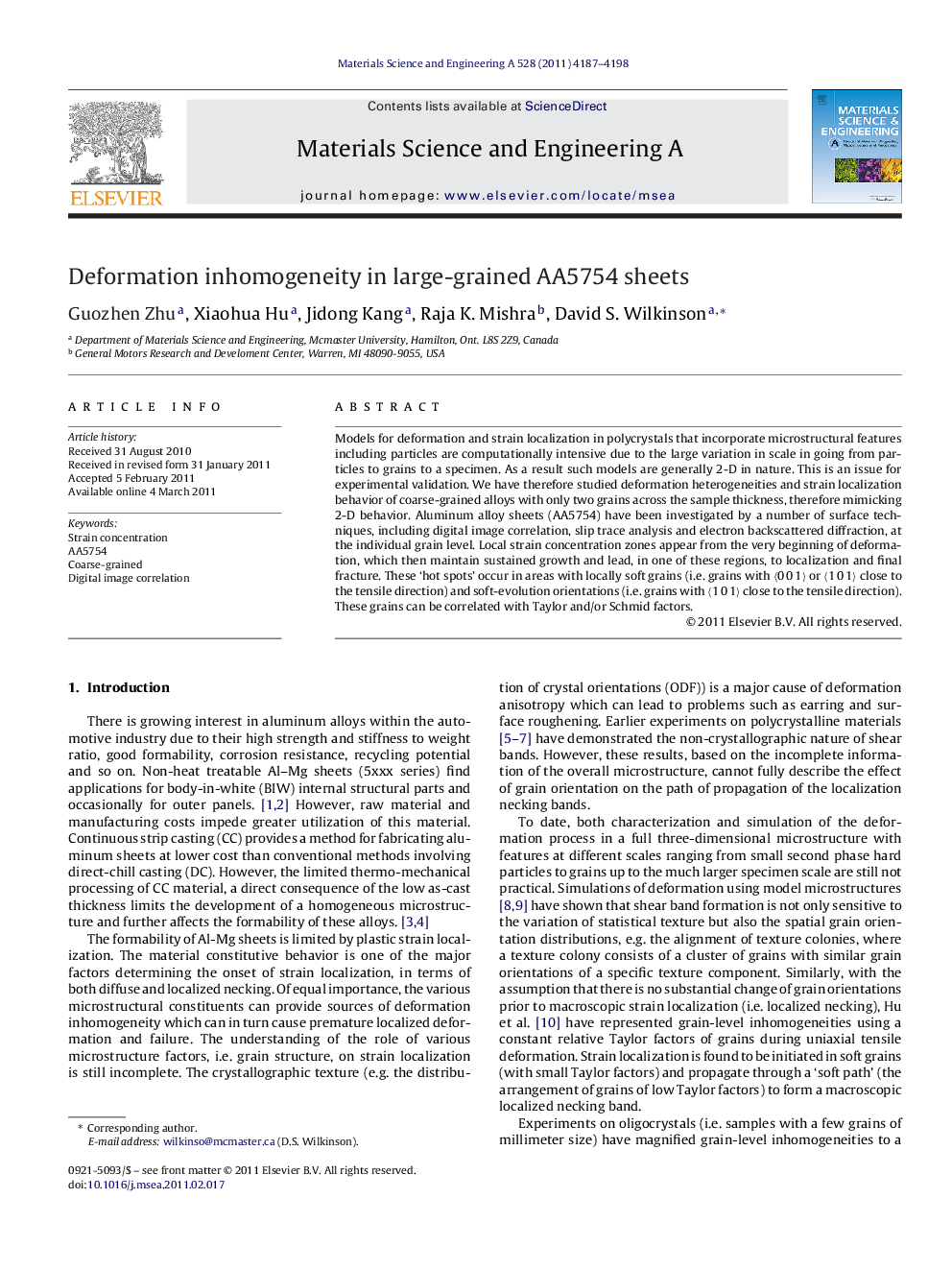| Article ID | Journal | Published Year | Pages | File Type |
|---|---|---|---|---|
| 1579221 | Materials Science and Engineering: A | 2011 | 12 Pages |
Models for deformation and strain localization in polycrystals that incorporate microstructural features including particles are computationally intensive due to the large variation in scale in going from particles to grains to a specimen. As a result such models are generally 2-D in nature. This is an issue for experimental validation. We have therefore studied deformation heterogeneities and strain localization behavior of coarse-grained alloys with only two grains across the sample thickness, therefore mimicking 2-D behavior. Aluminum alloy sheets (AA5754) have been investigated by a number of surface techniques, including digital image correlation, slip trace analysis and electron backscattered diffraction, at the individual grain level. Local strain concentration zones appear from the very beginning of deformation, which then maintain sustained growth and lead, in one of these regions, to localization and final fracture. These ‘hot spots’ occur in areas with locally soft grains (i.e. grains with 〈0 0 1〉 or 〈1 0 1〉 close to the tensile direction) and soft-evolution orientations (i.e. grains with 〈1 0 1〉 close to the tensile direction). These grains can be correlated with Taylor and/or Schmid factors.
Research highlights► Microstructure and strain relationship at individual grain level was studied. ► ‘Hot spots’ nucleate early and most keep growing throughout deformation stages. ► ‘Hot spots’ are correlated with ‘soft’ grains and soft-evolution grains. ► Grains with high Schmid factors tend to be ‘soft’ grains. ► Grains with the 〈1 0 1〉 direction close to tensile axis tend to become softer.
